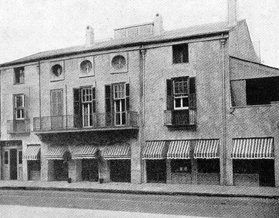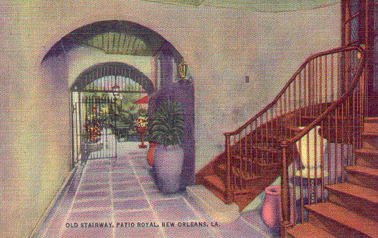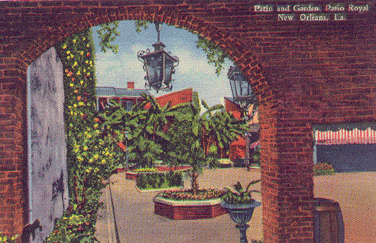Le Vieux Carré et Paul Morphy
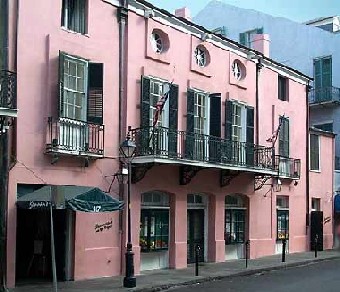
Brennan's Restaurant is located at 417 Royal Street between Conti and St. Louis Streets. An historic marker out front states:
"Banque de la Louisiane, built in 1795 by Vincent Rillieux (great Grandfather of the artist Edgar Degas) who purchased the site a month after the great fire of Dec. 8, 1794 had destroyed earlier buildings here and more than 200 houses and stores. It was bought in 1805 to house the Banque de la Louisiane, the first bank established after the Louisiana Purchase. Residence of the Alonzo Morphy family from 1841 to 1891. A son, Paul Morphy, (born 1837) who became the world's chess champion died here on July 10, 1884. Building given to Tulane University in 1920 by William Ratcliff Irby. Brennan's restaurant since 1955."
But that's just part of the story.
this information was taken from the Brennan Restaurant site
The two story structure as we know it today was built by Don Vincente Rillieux in 1795. After Rillieux died, his widow, Dame Maria Fonquet Rillieux, gave the property to her son-in-law, Santiago Freret. On June 2, 1801, Freret relinquished the title to Don Jose Faurie for 8,650 Mexican pesos.
The first transaction of the Royal Street property on record occurred on December 3, 1794, when Gaspar Debuys and Huberto Remy purchased the land from Angela Monget. On December 8, just five days later, the great fire of 1794 destroyed more than two hundred buildings in the city, including whatever buildings existed at 417 Royal Street. While the Spanish still ruled Louisiana, Don Vincente Rillieux, the great-grandfather of the French artist Edgar Degas, bought the land from Debuys and Remy. The purchase occurred on January 8, 1795, exactly one month after the fire. Records show that Debuys and Remy sold their lot, including the ruins of their building. The lot still had the original dimensions assigned by Pauger of 60 feet x 120 feet.
Don Jose Faurie not only lived in the mansion Rillieux had built, but conducted his business there also. On January 26, 1805, Faurie sold his house to Julien Poydras. Julien Poydras was the president of the newly organized Banque de la Louisiane (founded on March 11, 1804, by Governor Claiborne) and he converted his new purchase into a banking facility.
The bank was the first financial institution to be operated in New Orleans as well as in all of the territory secured by the United States through the Louisiana Purchase of 1803. Extensive renovations of the building by the bank included the addition of an intricately designed wrought-iron balcony railing with the bank's LB monogram, a compelling example of ferronnier’s art that still exists within the structure today.
In 1819, after the original Louisiana Bank had outlived its charter, the ground floor of the building was occupied temporarily by the Louisiana State Bank. On October 5,1820, the liquidators of La Banque de la Louisiane sold the property to Martin Gordon, a socially prominent Virginia gentleman and clerk of the United States District Court.
The Gordon family was noted for its lavish hospitality. The family home soon became the center of fashionable Creole social activities. Gordon was active in the politics of the day and a friend of General Andrew Jackson. General Jackson was the guest of honor at many lavish banquets staged at the Gordon home. After Andrew Jackson became President, he appointed Martin Gordon to the office of Collector of the Port of New Orleans in appreciation of Gordon's generosity and hospitality.
Unfortunately, in 1841 the Gordon Family met with financial reverses. The building was seized by the Citizen's Bank and sold at auction by the sheriff. Judge Alonzo Morphy, a former state attorney general and a member of Louisiana's high court, purchased the building.
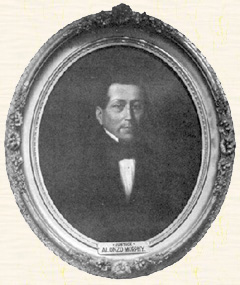 Judge Morphy was the father of Paul Morphy. This is the house where Paul learned to play chess from his uncle Ernest; where he grew up; where he always returned and where he lived until his death in 1884. Alonzo Morphy moved to New Orleans in 1809 from Charleston, South Carolina where his family had lived first on King Street and then Meeting Street. In New Orleans, he met and married Louise Therese Thelcide Le Carpentier, the daughter of Joseph Essau Le Carpentier and Modest Blanche Le Carpentier and lived in the newly constructed mansion at 1113 Chartres Street. In 1841, Alonzo and Thelcide packed up their four children, Edward, Malvina, Paul and Helena and moved to their new home on 89 Royal Street, which would later be re-numbered to 417. Malvina and John Sybrandt
had returned from England and moved in after the death of of Helena, the last survivor
of the household, in 1886. According to Regina Morphy, they moved out after a
while seeking smaller quarters uptown and the house was occupied by strangers
until it was
sold at auction, along with Paul's trophies and prizes, as part of the
settlement in 1991. Malvina and John both died in 1894. Paul Morphy himself died on July 10 1884, followed closely by his mother on January 11, 1885
Judge Morphy was the father of Paul Morphy. This is the house where Paul learned to play chess from his uncle Ernest; where he grew up; where he always returned and where he lived until his death in 1884. Alonzo Morphy moved to New Orleans in 1809 from Charleston, South Carolina where his family had lived first on King Street and then Meeting Street. In New Orleans, he met and married Louise Therese Thelcide Le Carpentier, the daughter of Joseph Essau Le Carpentier and Modest Blanche Le Carpentier and lived in the newly constructed mansion at 1113 Chartres Street. In 1841, Alonzo and Thelcide packed up their four children, Edward, Malvina, Paul and Helena and moved to their new home on 89 Royal Street, which would later be re-numbered to 417. Malvina and John Sybrandt
had returned from England and moved in after the death of of Helena, the last survivor
of the household, in 1886. According to Regina Morphy, they moved out after a
while seeking smaller quarters uptown and the house was occupied by strangers
until it was
sold at auction, along with Paul's trophies and prizes, as part of the
settlement in 1991. Malvina and John both died in 1894. Paul Morphy himself died on July 10 1884, followed closely by his mother on January 11, 1885One unusual feature of the house, it's been said, was that Judge Morphy had designed a huge chess board on the floor of one of the upstairs rooms for his son's delight.
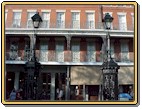
After purchasing the house on Royal Street, extensive refurbishing was necessary and for several months the Morphy family took up residence in one of the Pontalba buildings (four story brick buildings) on St. Peter Street.
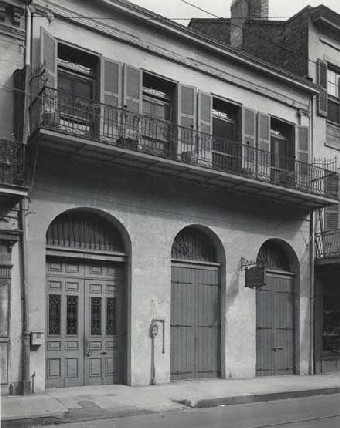
This late 1800 photograph of 534-536 Royal street gives an indication of how the houses looked before the massive reconstructions and renovations of the 20th century.
After the sale of the property by the executors of the Morphy estate, it passed through several owners. It was finally purchased by William Ratcliffe Irby, who acquired his fortune in tobacco, dairy products and banking, and, as a member of the Board of Administrators of Tulane University, donated the property at 417 Royal Street to Tulane University in 1920. Owen Edward Brennan rented the property from Tulane University in 1954, renovating and restoring it's original charm while converting it into the restaurant that exists today. In 1984, Owen's three sons, Pip, Jimmy and Ted, purchased the building from Tulane University.
Every year since 1983, Wine Spectator magazine has given Brennan’s its Grand Award, dubbing it one of the 100 best wine cellars in the world
